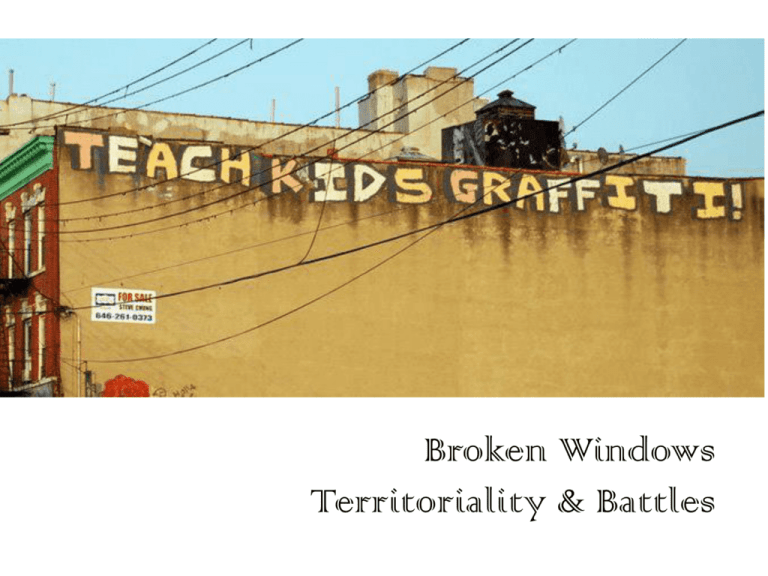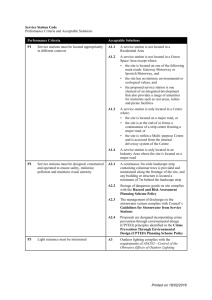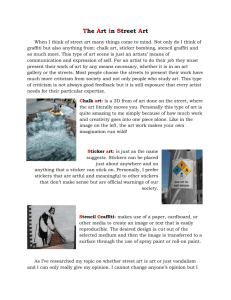Territories & Tolerance
advertisement

Broken Windows Territoriality & Battles Kelling & Wilson 1982 Broken Windows • Biography… People are made up of “regulars” and “strangers” What kind of policing and surveillance does this justify? Kelling & Wilson 1982 Broken Windows Comparison between Bronx & Palo Alto? • Stanford University • ‘While the city contains homes that now cost anywhere from $800,000 to well in excess of $40 million, much of Palo Alto's housing stock is in the style of California mid-century middleclass suburbia…’ Kelling & Wilson “Should police activity on the street be shaped […] by the standards of the neighborhood rather than the rules of the state?” Who are “strangers” Unpacking... • Bauman • Harvey • Brighenti ties some of the issues – graffiti Liquid Fears: Symbolic End • 9/11 • Illusion of security in territoriality • Vague strangers • Even procedural rationality will not be enough to regulate all social groups... • Neoliberal strategies... Bauman, Z (2002).Reconnaissance Wars of the Planetary Frontier. Culture & Society. 14(4):8190. New Military Urbanism • Justifies the militarization of the everyday – People background noise.. • Industry of reconnaissance (Bauman) Right to the City • David Harvey drawing from Lefebvre • Marxist • Jane Jacobs • Cities are full of conflict – Material conditions shape social conditions... Urbanism: Surplus Production • “The city is the historical site of creative destructivism” • (Harvey, 2003:939) Public Space as a Resource • Crisis: “Quality of urban life has become a commodity...” (Harvey, 2008:p.8) • Byward Market Brighenti What is precisely public in public space? Walls as strategy... Governmentality Defining graffiti.... Problematic • Interstitial practice • When interrogated from each perspective: “yes, but....” Common denominator: materiality Because... 1. Global context & “street” 2. Legislation vs. creativity 3. Tools & techniques of the body 4. Simplistic/complex lifestyle 5. Architecture as affordances (not things) Walls as Artefacts: Strategy Why does a municipality care about walls? Strategy Governmentality (Foucault) • Procedural power • Historical emergence of knowleges about such powers/populations • Application of tools – Administrative state Walls as Visable Territorial Devices Graffiti as Tactical Strategy... Citizens are ‘imagined’ in walls (Official Graffiti, Hermer & Hunt) Graffiti challenges these narratives with “at hand” tools (bricolage) Public scene as composition The “street”: the birth and target of graffiti Allison Young’s research: • Confusion about public space - target for ‘education’ ‘E’ is for Propaganda Graffiti poses two questions… 1. What is a writer? 2. What is public space? – Restrictive/Utilitarian – Permissive/Antiquity Are you on the transit way at Slater and Bank? Look up! Territory • “Tags” create territory • Graffiti IS territory – It does not end at the wall – Community – All is not resistance... Walls... “...are governmental tools that set limits and impasses, and complimentary allowed paths and trajectories...” Writers see walls as invitations to continue the conversation about public space... Arresting Images… By not recognizing graffiti as a dialectic, we risk contributing to the reproduction of inequality for the people who produce, consume and reproduce these aesthetics of security… There is no graffiti where there is no grievance” – Marshall McLuhan





